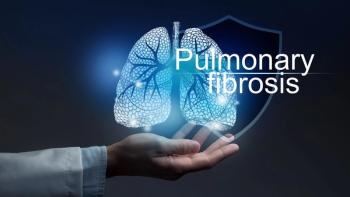
Annex 1 Considerations for Fill/Finish
Equipment and systems for aseptic transfer and manufacture meet cGMP and Annex 1 requirements for pharmaceutical fill and finish.
Editors' note: A version of this article was published in Pharmaceutical Technology Europe’s APIs, Excipients, and Manufacturing 2019 Supplement.
On December 20, 2017, the European Commission published the long-awaited revision draft of EudraLex, Volume 4, EU Guidelines to Good Manufacturing Practice Medicinal Products for Human and Veterinary Use, Annex 1, Manufacture of Sterile Medicinal Products (1). Even before its release, Annex 1 has triggered many heated debates on how it will influence existing aseptic manufacturing processes, and these debates have further intensified after publication. On the one hand, some paragraphs leave a lot of room for interpretation. On the other hand, the industry fears overregulation.
Some of the most frequently discussed topics of Annex 1 include material classification for sterile transfers, more detailed risk assessment procedures for processes and the associated environment, more operational qualification (OQ) testing, and laminar flow (LF) conditions for loading and preparing machines for production as well as reducing the overall risk from human intervention. These topics lead to the question how to evaluate and justify the use of a certain solution and how to increase sterility with available equipment.
Most importantly, the revision draft aims to achieve an industry-wide agreement on a high level of standards, while keeping costs and efforts under control. Major scientific advances are leading to pioneering developments and changes in the bio/pharma industry. In parallel, manufacturing processes are changing at a rapid pace, with the goals of making processes safer, monitoring them more closely, and making overall production more transparent. Achieving these goals includes minimizing contamination, instructing staff in the best possible way, and continuously securing quality in all areas. Advanced equipment and manufacturing systems are also helpful in achieving these goals. This article reviews some of the technologies and trends in equipment and systems that can be considered for GMP aseptic manufacturing.
Automation
Supported by the revision of Annex 1, an increasing demand for automation and robotic systems, such as the equipment shown in Figure 1, can already be observed throughout the industry. A reduction of gloves and human interventions to the absolute minimum in barrier systems in the future and ideally “gloveless” systems wherever possible can be expected. Restricted access barrier systems (RABS) are bound to undergo the most fundamental changes through integration of more robust and reproducible procedures for material transfer, as well as cleaning and biodecontamination. Most importantly, the use of robotics will further reduce risk factors such as human intervention or particles, and thus contribute to maintaining grade A conditions throughout the process. Abrasion-resistant materials and processes (e.g., levitating transport systems) and robotic transfer solutions are already revolutionizing aseptic processing.
At the same time, so-called Industry 4.0 (i.e., “connected industry”) solutions based on new software developments will change the pharmaceutical production landscape. Older equipment can be retrofitted, and new solutions are already available that closely monitor all processes and facilitate maintenance with preventive (and in the future even predictive) models, which significantly reduces the level of unforeseen interventions.
RABS and isolators
Choosing RABS or isolator technology is a strategic decision. All types of RABS are operated in ISO 7 (EU cGMP Grade B), while isolators and containment systems are operated in ISO 8 (EU cGMP Grade C [D]). The transfer of goods to RABS is generally handled under laminar-flow (LF) conditions and is still often performed manually. Isolator and containment systems, however, use a fast hydrogen peroxide transfer chamber, as well as integrated and more automated rapid transfer ports (RTP), for instance for the supply of stoppers and caps. The main difference between RABS and isolators is the decontamination cycle in a closed, well-monitored isolator, which increases sterility assurance on top of general cleaning procedures. Figure 2 shows an example of an isolator for fill/finish.
RABS, however, are increasingly being treated as isolators. RABS are operated with locked doors during the entire production and feature robotic process steps and product transfer. RABS now often have RTPs just like isolators, as well as sophisticated airlocks with active (Grade A) LF supply. Whether isolators or RABS are used, the most important goal of Annex 1 is to achieve the highest quality by reducing contamination through microorganisms, particles, or pyrogens to a minimum and, subsequently, to reduce human intervention as much as possible.
Single-use filling systems
But even without human intervention, a certain risk for contamination remains. Industry insiders often discuss the “ring of concern”-the fact that every aseptic transfer system has a weak point. Many technical solutions try to optimize and monitor this point, for example, by using fully automated sterilizable transfer ports and valves. There are many ways of bringing products and materials into barrier systems. A general distinction can be made between continuous (e.g., mouse hole, e-beam, hot air tunnel) and discontinuous transfer systems (e.g., RTP, airlocks, or liquid transfer systems during campaigns).
When transferring aseptic liquids between two areas with different containment classifications, for example, the classical solution of hard pipes with clean-in-place/sterilize-in-place (CIP/SIP) systems is still common. Whereas, single-use liquid filling systems are becoming more and more popular and are replacing the hard pipe solutions wherever possible. These systems are often favored for their practical simplicity.
Single-use liquid filling equipment (e.g., connectors, needles, tubing, or intermediate bags) comes presterilized, preassembled, and prevalidated in multiple wrapped bags, enabling their use for either traditional vessels or fully disposable fluid handling technologies, such as the single-use systems shown in Figure 3. Particularly in small-batch production with frequent product changeovers, single-use systems offer an affordable alternative. But they are also well suited for large-volume filling and high-speed applications up to 400 containers per minute in multi-product lines, where conventional cleaning methods such as CIP/SIP not only cause extended downtimes but also aseptic risks due to several complex steps involving a lot of equipment. Because the components are disposed of after use, there is no need for cleaning, cleaning validation, or (re-)sterilization. Moreover, presterilized containers further reduce the number of processes and associated risks, because they no longer require the usual washer and depyrogenation tunnel for sterilization.
Cleaning and decontamination
Despite all discussions about barrier systems, there is at least one thing that RABS and isolators have always had in common: “after a batch is before a batch”. Cross-contamination and cleaning procedures play a decisive role, and the high requirements of aseptic production can only be fulfilled by thorough cleaning.
The vaporized hydrogen peroxide approach has been successfully used for 25 years as an additional surface sterilization method in aseptic manufacturing facilities worldwide. Vaporized hydrogen peroxide is vapored, low concentrated hydrogen peroxide (e.g., 35%). A specially designed generator initially dehumidifies the ambient air, then produces vaporized hydrogen peroxide by passing aqueous hydrogen peroxide over a vaporizer and doses a certain concentration into the dedicated area; the system is fully controlled and monitored.
While vaporized hydrogen peroxide is used mainly in isolators, it can now also be seen in some closed-RABS (cRABS) applications, and it is by no means ruled out by Annex 1. The molecular structure of vaporized hydrogen peroxide can sterilize surfaces that may not be easily accessible with other cleaning agents, such as sporicides or isopropanol wipes. VHP is no substitution for well-performed general cleaning procedures or overall good aseptic processes. However, this additional surface sterilization will further reduce sterility risks in a risk analysis. Indirect contact parts, such as stopper bowls, still need to be sterilized (i.e., in an autoclave) before entering an isolator. They are usually unwrapped and inserted immediately before a decontamination cycle under LF conditions or transferred immediately before production starts in the closed and decontaminated isolator. Microbiological monitoring provides additional confidence in these procedures.
Next steps
A lot of what is described in Annex 1 is already common practice in many production facilities worldwide, including the use of automation, preventive maintenance, process monitoring, and extensive risk management. Risks must be identified; processes must be designed with common sense; and most importantly, the highest quality standards need to be established in daily working life. In the end, approval always depends on the ability to prove that the processes and technologies are safe for product, operator, and patients. At the same time, every guideline, procedure, or specification can only be as good as its application.
Reference
1. European Commission, EudraLex, Volume 4, EU Guidelines to Good Manufacturing Practice Medicinal Products for Human and Veterinary Use, Annex 1, Manufacture of Sterile Medicinal Products, December 2017.
About the author
Jürgen Metzger is Barrier Systems & Process Specialist at Robert Bosch Packaging Technology, Inc.,
Newsletter
Get the essential updates shaping the future of pharma manufacturing and compliance—subscribe today to Pharmaceutical Technology and never miss a breakthrough.





